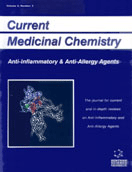Abstract
Nitric oxide (NO) is a very labile molecule of ubiquitous significance in biological systems in general. During the past two decades, NO has been recognized as one of the most versatile players in immune function. This diatomic molecule is normally produced by constitutive NO synthase and plays an important role in physiological regulation of nerve transmission and cardiovascular function. In contrast, an enormous and uncontrollable amount of NO, is synthesized by inducible NO synthase in activated immune cells during inflammation. Although the production of NO in inflammation has been described in numerous studies, the equivocal role for NO in vs. during an inflammatory response is not clearly defined. For example, when produced in excess, NO or its metabolites may not only be cytotoxic to host cells but also mediate local host defense mechanisms. As a result, NO has been nicknamed both “murderer” and “mediator”. This article reviews these two apparently opposing aspects of NO action during infection in the human system. This review deviates from post-1990 authoritative reviews in attempting to highlight important differences in the reaction of NO with oxygen or superoxide when fluxes of NO are dramatically enhanced reactions, which may predominate during active inflammation. This article proposes that in humans, the physiological chemistry of NO and its metabolites allow one to identify which of the many NO-dependent reactions contribute to the modulation of inflammatory response, and may help scientists in the design of new therapeutic agents for the treatment of inflammatory diseases.
Keywords: nitric oxide, superoxide, nitric oxide synthase, Inflammation
 5
5

